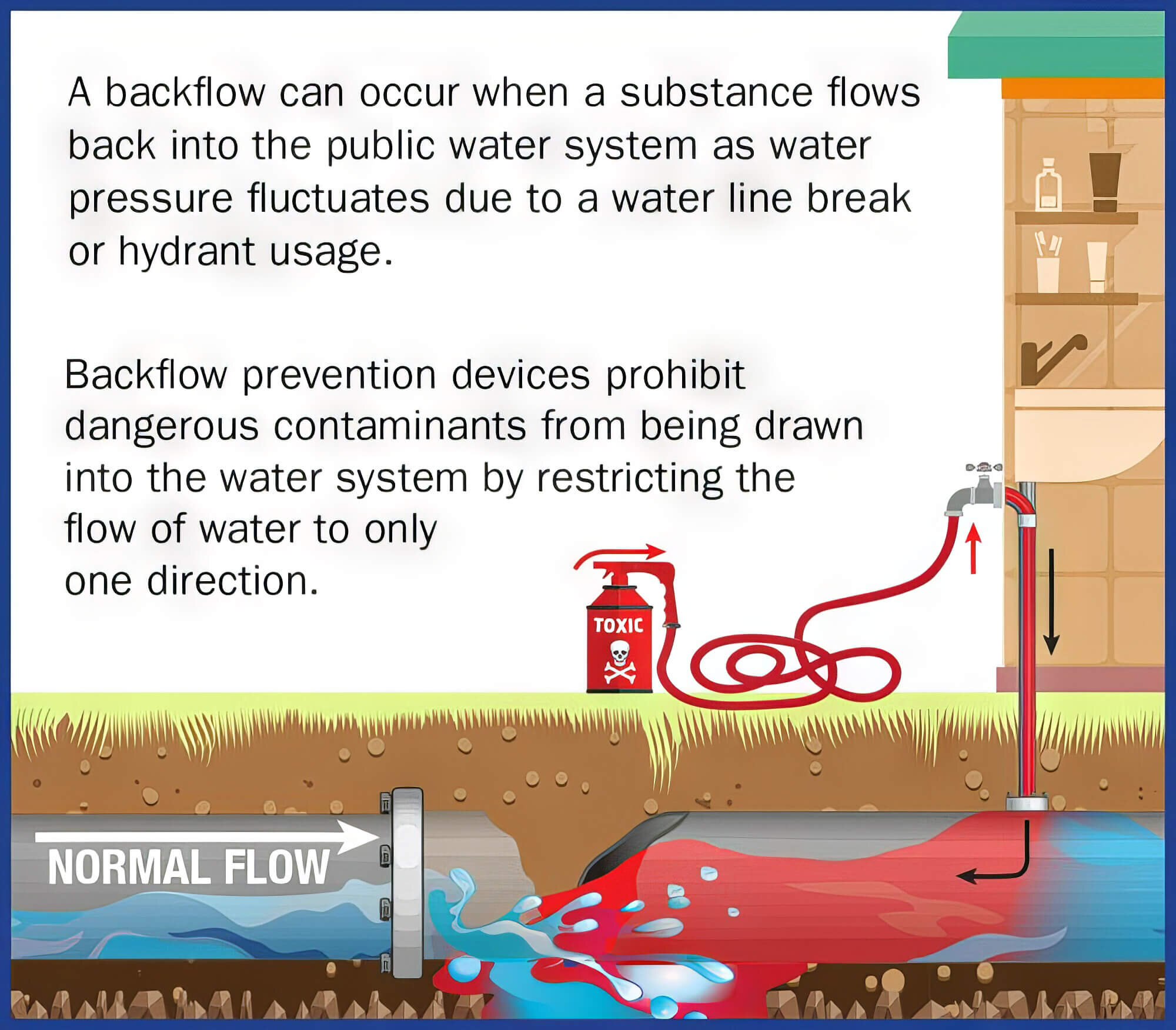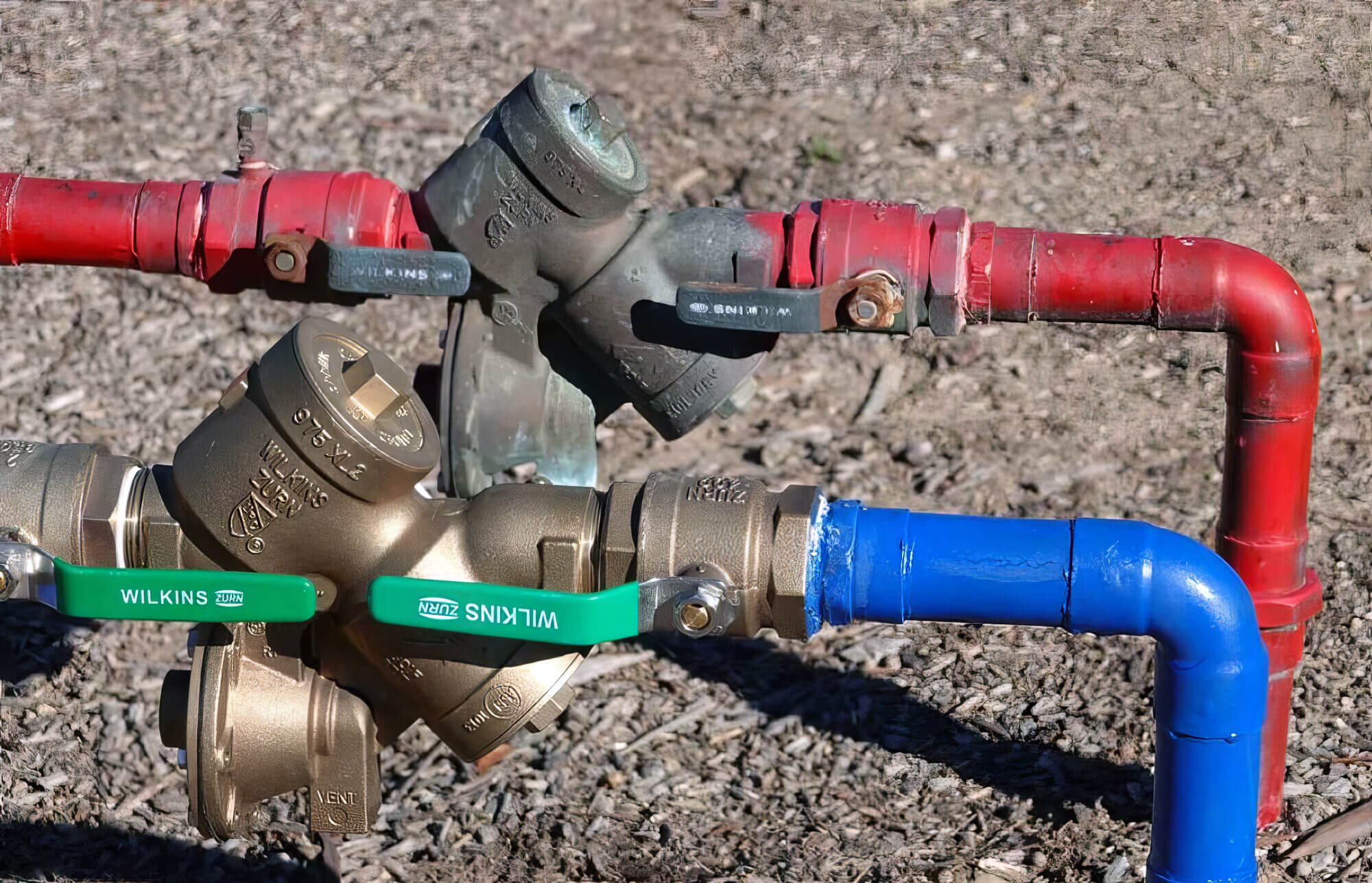Imagine a world where there is no access to clean, potable water. Sounds frightening, right?
Contaminated water often causes various health problems. It harbors bacteria, dirt, and debris, carrying diseases that can lead to nausea, headaches, or worse.

You might think you’re safe from all this thanks to your home’s plumbing system. Unfortunately, backflow is a severe problem in most residential and commercial drainage systems, contaminating your drinking water supply.
But what exactly is backflow, and how can it be prevented? Let’s take a look.
What Is Backflow?
A typical water supply plumbing system consists of two sets of pipes: one that brings clean water in and another that carries dirty water out, both flowing in one direction. When the reduced pressure of these pipes falls, the entire water flow becomes disrupted.
Water flow becomes slower since the required water pressure levels no longer exist. This ultimately leads to backflow, which occurs when water from wastewater flows in the reverse direction and seeps through to mingle with clean water. This essentially describes back siphonage, a form of backflow.

What Causes Backflow?
Backflow can occur for various reasons, from pump failure to extremes such as damaged water supply lines and heavy water usage from public sources.
Though negligible, a backflow can impact your surrounding area, neighbourhood, and country-wide water systems. You are so; ignoring a backflow when and if it happens is not the best idea.
Luckily, several testable backflow prevention devices and methods can reduce the chances of backflow to keep your home’s water system safe.
What Is Backflow Prevention?

The most commonly used backflow prevention device is a check valve unit installed in your pipes. Consider installing a backflow prevention device because these double-check valves prevent backflow by forcing water in the pipes to flow only in one direction, maintaining an air gap.
Modern technology has also paved the way for automatic mechanical check valves that open and shut. Mechanical valves, which the device must include, further reduce the possibility of backflow and ensure that your plumbing systems function correctly.
These backflow devices are commonly found in commercial settings, but residential areas can significantly benefit from them. This is especially true if you own a sprinkler system connected to the main water supply system.
Cross-connections are the biggest culprits for cross-contamination and backflow occurs. If the supply pressure within the pipes decreases due to back pressure or a burst pipe or using the fire services, it can result in cross-contamination through the sprinkler head. This can, in turn, lead to fertilisers and pesticides mixing with clean water.
However, like most things, backflow preventers develop wear and tear, often leading to complications that require professional help.

Benefits Of A Backflow Prevention
Installing a backflow prevention device keeps your drinking water clean and uncontaminated. This peace of mind means you won’t need to worry about harmful substances seeping in.
Many states have made installing a backflow device mandatory. Additionally, newer houses, especially ones with a sprinkler system, have installed a separate backflow device.
Apart from ensuring that property owner and their loved ones access healthy, clean, potable water, a backflow prevention device protects the pipes from damage. Due to backflow, several foreign materials pass through the pipes, ultimately damaging them.
Sewerage pipe damage or burst pipes can result in contaminated water and expensive repair jobs that drain a hole in your pocket. Hence, installing a backflow preventor is a necessity.
What Is Backflow Testing?

You might not notice a backflow problem in your home’s plumbing since these issues occur deep within the pipes and only show signs when they get worse.
So, to prevent backflow from hampering the health and well-being of you and your family, conduct a backflow test. This process is usually done by licensed plumbers who use a backflow testing device to ensure your plumbing system is safe and adequately maintained.
Typically, when backflow testing occurs, the professionals look at the pipes connecting to your property from the water main. The public water service system consists of valves that can be damaged by weather conditions, which can cause backflow. A backflow test is conducted using gate and relief valves on the backflow testing device.
After backflow testing, you’ll be able to spot issues early and take action. This ensures your drinking water remains safe and healthy.
Since backflow risk is increasing rapidly, annual backflow testing is required to keep your drainage system safe. Several cities send notices to remind you of backflow testing, but we recommend you immediately respond and make necessary arrangements beforehand for the backflow testing process. If you are in South East Queensland, speak to our team about backflow prevention testing today!
Breathe A Sigh of Relief: Get Your Backflow Test Today
Your home should be a sanctuary for relaxation and family time. However, backflow issues can pose a serious health risk to your family.
No one wants their loved ones to drink contaminated water and fall ill. Backflow testing ensures this doesn’t happen, providing years of safety with just a few hours of work.
Contact a licensed plumbing contractor immediately to get backflow testing done. If you have any questions, call our professional team in Noosa!
Before you go, for more plumbing advice, check out our top tips for homeowners on plumbing safety.



